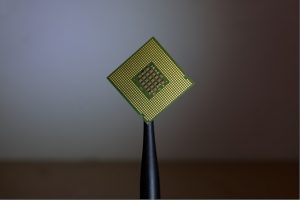IBM Drives Tech World Closer to Super Memory Era
![]() IBM has just unveiled its recent discovery that is said to be the biggest leap of any companies: “racetrack memory.” This breakthrough technology has the potential to exponentially increase the computing performance and can facilitate storage of information that is 100 times bigger than any of the existing ones. In the near future, IBM is looking at producing a device that has the memory of today’s most sophisticated business-class servers and will use lesser energy. This development shortens the gap between the dream and its realization of having super memory capabilities, with big implications for the real-time web in the evolving web experience.
IBM has just unveiled its recent discovery that is said to be the biggest leap of any companies: “racetrack memory.” This breakthrough technology has the potential to exponentially increase the computing performance and can facilitate storage of information that is 100 times bigger than any of the existing ones. In the near future, IBM is looking at producing a device that has the memory of today’s most sophisticated business-class servers and will use lesser energy. This development shortens the gap between the dream and its realization of having super memory capabilities, with big implications for the real-time web in the evolving web experience.
From an infrastructure standpoint, this big stuff, with several implications for how the real-time web plays out. It’s a hot and happening area of interest for many in the cloud industry, particularly Fusion-io, which also has been working on in-memory caching and has some notable developments as well. See here for our latest Wheel discussion on Fusion-io, where we take a deeper look at the “SiliconANGLE” of this up-and-coming company.
In a recent blog posted in Slashdot, the concept behind “racetrack” was broken down: “Racetrack memory works by storing data as magnetic regions (also called domains), which would be transported along nanowire “racetracks.” Instead of forcing a computer to seek out the data it needs, as traditional computing systems do, the information would automatically slide along the racetrack to where it could be used. The result: powerful and efficient computing.” To easily grasp the idea, it’s like having the ability to store all the movies made in the planet in a single device and have more space after.
Dr. Stuart Parkin an IBM Fellow at IBM Research provided further details on this development. He said, “We discovered that domain walls don’t hit peak acceleration as soon as the current is turned on, and that it takes them exactly the same time and distance to hit peak acceleration as it does to decelerate and eventually come to a stop.
“This was previously undiscovered in part because it was not clear whether the domain walls actually had mass, and how the effects of acceleration and deceleration could exactly compensate one another. Now we know domain walls can be positioned precisely along the racetracks simply by varying the length of the current pulses even though the walls have mass.”
While others feel that this could be just an exaggeration of another tidbit discovery, Mark Hopkins, a SiliconAngle analyst, shared his view on this breakthrough and has expressed optimism. He stated, “I imagine this has a great deal of impact on the shelf life of technologies like in-memory caching, and the speed at which Hadoop and other databases can index large quantities of data.
“The technology sounds like it’s a few years away from actual deployment, but based upon what research IBM has disclosed here, it looks like it extends the Law of Accelerating Returns as applied to computer memory for quite some time. Furthermore, this technology appears to be equally applicable to SSD technology, which could further drop the market price for non-magnetic storage. This, of course, directly impacts the shelf-life of LoAR for storage.”
This discovery from extensive researches of IBM also supports their campaign on pushing for eco-friendly technology. In an article posted in SiliconAngle, the New York-based IBM explained that technology can be wisely utilized to improve environmental conditions. This drive for greener administration of the organization is included in the annual “Next Five in Five,” IBM’s yearly predictions on top technology trends.
A message from John Furrier, co-founder of SiliconANGLE:
Your vote of support is important to us and it helps us keep the content FREE.
One click below supports our mission to provide free, deep, and relevant content.
Join our community on YouTube
Join the community that includes more than 15,000 #CubeAlumni experts, including Amazon.com CEO Andy Jassy, Dell Technologies founder and CEO Michael Dell, Intel CEO Pat Gelsinger, and many more luminaries and experts.
THANK YOU





















